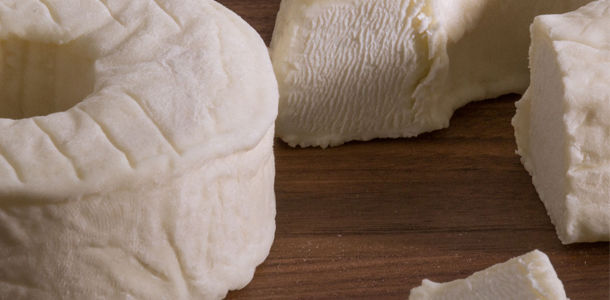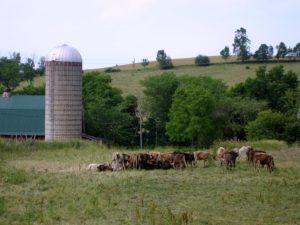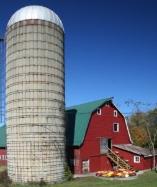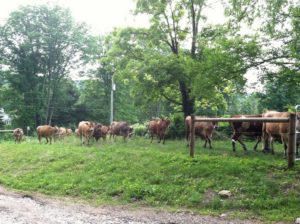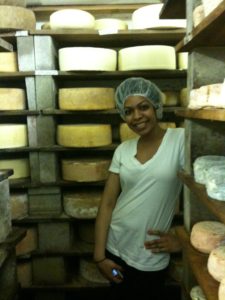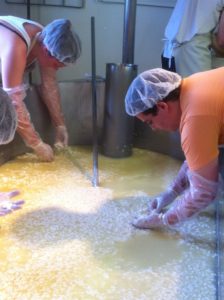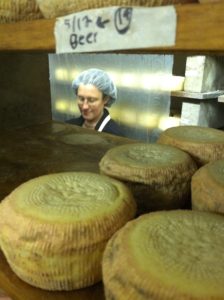by Adeline Druart, Master Cheesemaker & Operations Manager at Vermont Butter & Cheese Company
At Vermont Creamery we are known for making the best fresh and aged goat cheese in the country. We’ve been in business since 1984, and have been working with Murray’s for almost that long – way back when Rob, Frankie and Cielo were all behind the counter at the tiny shop on the corner of Bleecker Street. Our creamery crème fraiche, butter, and fresh goat cheese became a staple at the store, as did our small geo-rinded cheeses (the brainy-looking cheeses that are made with Geotrichum candidum mold). Over the years we’ve shared cheese beyond the shop, too – teaching classes, visiting restaurants, even hosting a bus of cheeselovers on a trip to the Vermont Cheesemakers’ Festival.
As Murray’s and Vermont Creamery continued to grow, what was left to do but create a brand new cheese, one that was made in Vermont and sent to age in the caves below Murray’s in New York City? Since we are known for our geo-rinded cheeses, it made sense to make an un-aged, or “green,” geo cheese for Murray’s to age – and that’s just what we did.
Vermont Creamery cheesemaker, Adeline Druart gathered the wish list from Murrays: Size? Small. Shape? Round. Ash? Nah. Creamy? YES. Yeasty-sweet-earthy-complex? Obviously. And yup, that signature brain-y Geotrichum rind, please. Our cheese expert friend from Australia, Will Studd put in his two cents and suggested we cut out the center, making a donut to create even more surface area for a yummy rind throughout. And with that brilliant idea, Torus was born.
Sounds easy enough? Not so. Adeline and the Murray’s cave master Brian Ralph worked for a year to perfect this little “donut.” Moisture and salt levels had to be just right. The milk had to be selected to accommodate the natural climate in the cave. The cave master had to “wake up” the dormant yeast and cheese cultures inside the carefully packaged and cooled cheeses to assure that the rind would grow properly in the cave. Luckily, with time we got it right. The result is a quintessential Geo goat cheese, with a flavor and texture unique to Murray’s and Vermont Creamery’s partnership.
What’s in a name? Donuts make us think of Homer Price. And Homer Simpson. But we would like to think that making a good cheese requires more savoir faire. After lists of names by many, Murray’s buyer Aaron Foster came up with “Torus,” the geometric term for the ring shape of the cheese. Indeed an artisanal replica of a geometric torus, we also think of Taurus the bull, an equally appropriate image for this cheese that required tenacity and drive to create such a satisfying reward. Vermont Creamery has spent years developing the Geotrichum category of goat cheese in America, both in perfecting the cheese and also in educating the market. We are delighted to share the challenge with Murray’s who will serve their customers with a unique taste of Vermont and Manhattan terroir this holiday season.
Read more about Torus in the Wall Street Journal

